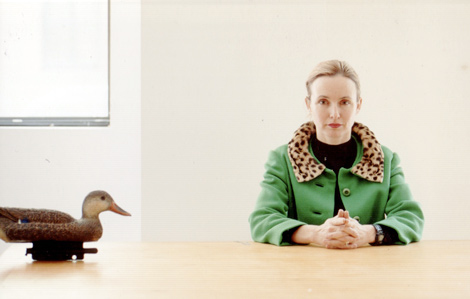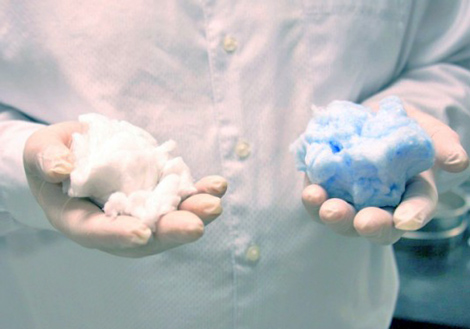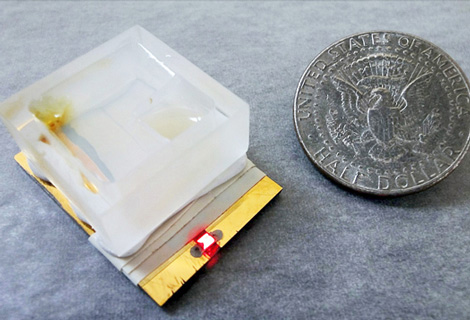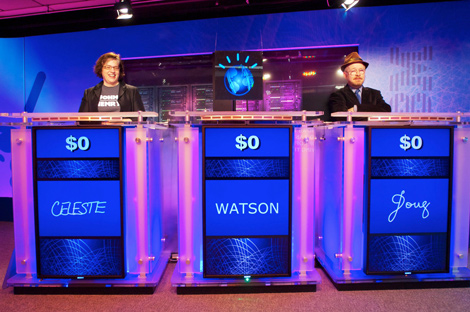Posted on June 2nd, 2011 by axb

Every once in a while, an engineer comes along whose work combines different disciplines in a way that is both fascinating and inspiring. Natalie Jeremijenko is one such engineer. A modern-day Renaissance woman, Jeremijenko challenges traditional approaches to problem solving with such initiatives as zip-lines to speed kids to school or The Environmental Health Clinic, where “im-patients” come in with environmental health concerns and leave with creative prescriptions to help solve these issues:
Read More
Filed under: Biomedical, e-News, Environmental, Mechanical, Trailblazers | 1 Comment »
Tags: Art, Biomedical, Environmental, Mechanical, Trailblazers
Posted on May 11th, 2011 by axb

It’s not edible, but this new fiber could be the right medicine for persistent wounds.
A fluffy new material composed of glass fibers could be the latest in wound-healing technology, say researchers from Missouri University of Science and Technology. This cotton candy-like substance (pictured above) is composed of borate glass nanofibers and has been labeled DermaFuse.
Read More
Filed under: Biomedical, e-News, Materials | 1 Comment »
Tags: Biomedical, Materials, Nanotechnology
Posted on May 6th, 2011 by jxh

People who suffer from pancreatitis, a sudden inflammation of the pancreas, can experience severe stomach pain, nausea, fever, shock, and even death.
In order to detect pancreatitis quickly, biochemistry researchers at University of Texas at Austin have developed a sensor the size of a matchbox using only aluminum foil, gelatin, a 12-cent LED light, and a few other inexpensive materials.
Read More
Filed under: Biomedical, e-News | Comments Off on Jell-O Now Detects Organ Failure
Tags: Biomedical
Posted on February 17th, 2011 by jxh

Former Jeopardy champion contestants face off against Watson in a test run at IBM Research Labs
It may just be the greatest man vs. machine matchup since chess champion Garry Kasparov squared off against Deep Blue.
This week, the two most celebrated and successful players in Jeopardy history matched wits in a three-day competition against Watson, an IBM supercomputer, and, as many predicted, the artificial intelligence program won by a landslide.
Read More
Filed under: Biomedical, Computer, e-News, Electrical | 4 Comments »
Tags: Biomedical, Computer, Electrical
Posted on January 20th, 2011 by axb

With the aid of supercomputers, we may soon have a new, extraordinary understanding of the human brain
Imagine a football stadium filled with 100,000 people on laptops, all networked together and working to solve the same computing problem. Now triple that number, and you’ll have the approximate computing power of some of the world’s most advanced supercomputers.
Machines like Jaguar and Kraken, both at the University of Tennessee, have a processing speed of about two petaflops, which means they can perform about 1015 calculations per second. Researchers are currently working towards exascale computing (that is, crunching over 1018 calculations per second), and some predict this may even be possible by the year 2020.
Read More
Filed under: Biomedical, Computer, e-News, Explore Engineering | 6 Comments »
Tags: Biomedical, Computer













